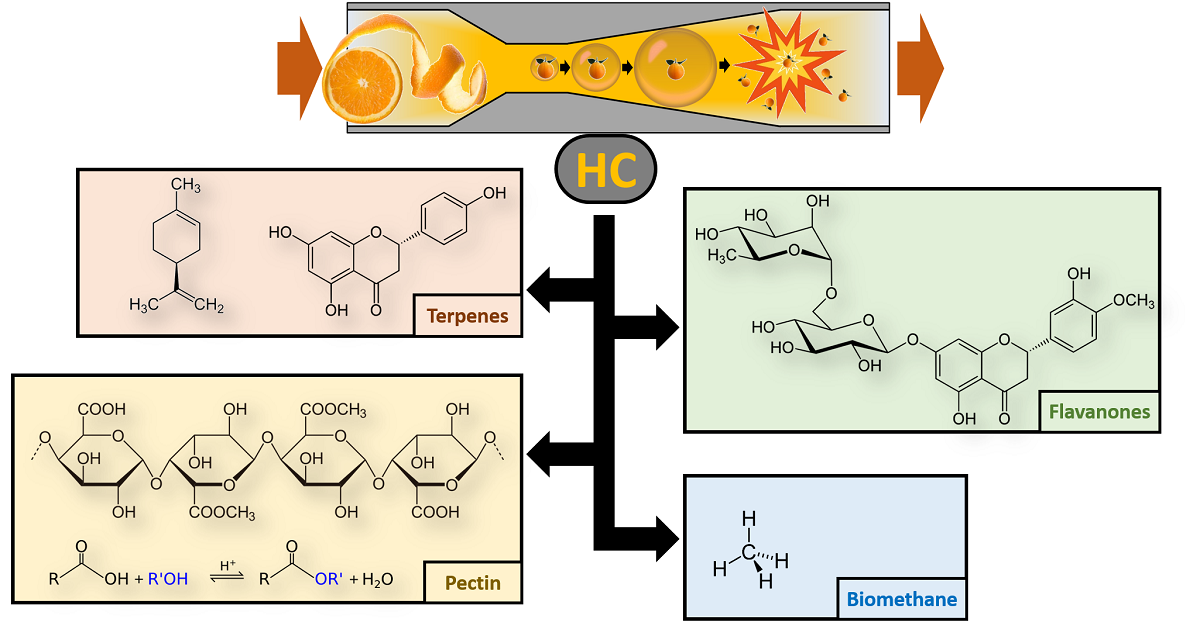Waste orange peel represents a heavy burden for the orange juice industry, estimated in several million tons per year worldwide; nevertheless, this by-product is endowed with valuable bioactive compounds, such as pectin, polyphenols and terpenes. The potential value of the waste orange peel has stimulated the search for extraction processes, alternative or complementary to landfilling or to the integral energy conversion. This study introduces controlled hydrodynamic cavitation processes, as a new route to the integral valorization of this by-product, based on simple equipment, speed, effectiveness and efficiency, scalability, and compliance with green extraction principles. Waste orange peel, in batches of several kg, was processed in more than 100 L of water, absent any other raw materials, in a device comprising a Venturi-shaped cavitation reactor. The extractions of pectin, endowed with a very low degree of esterification, polyphenols (flavanones and hydroxycinnamic acid derivatives), and terpenes (mainly d-limonene) were effective and fast (high yield, few min of process time), as well as the biomethane generation potential of the process residues was effectively exploited. The achieved results proved the viability of the proposed route to the integral valorization of waste orange peel, though wide margins exist for further improvements.

